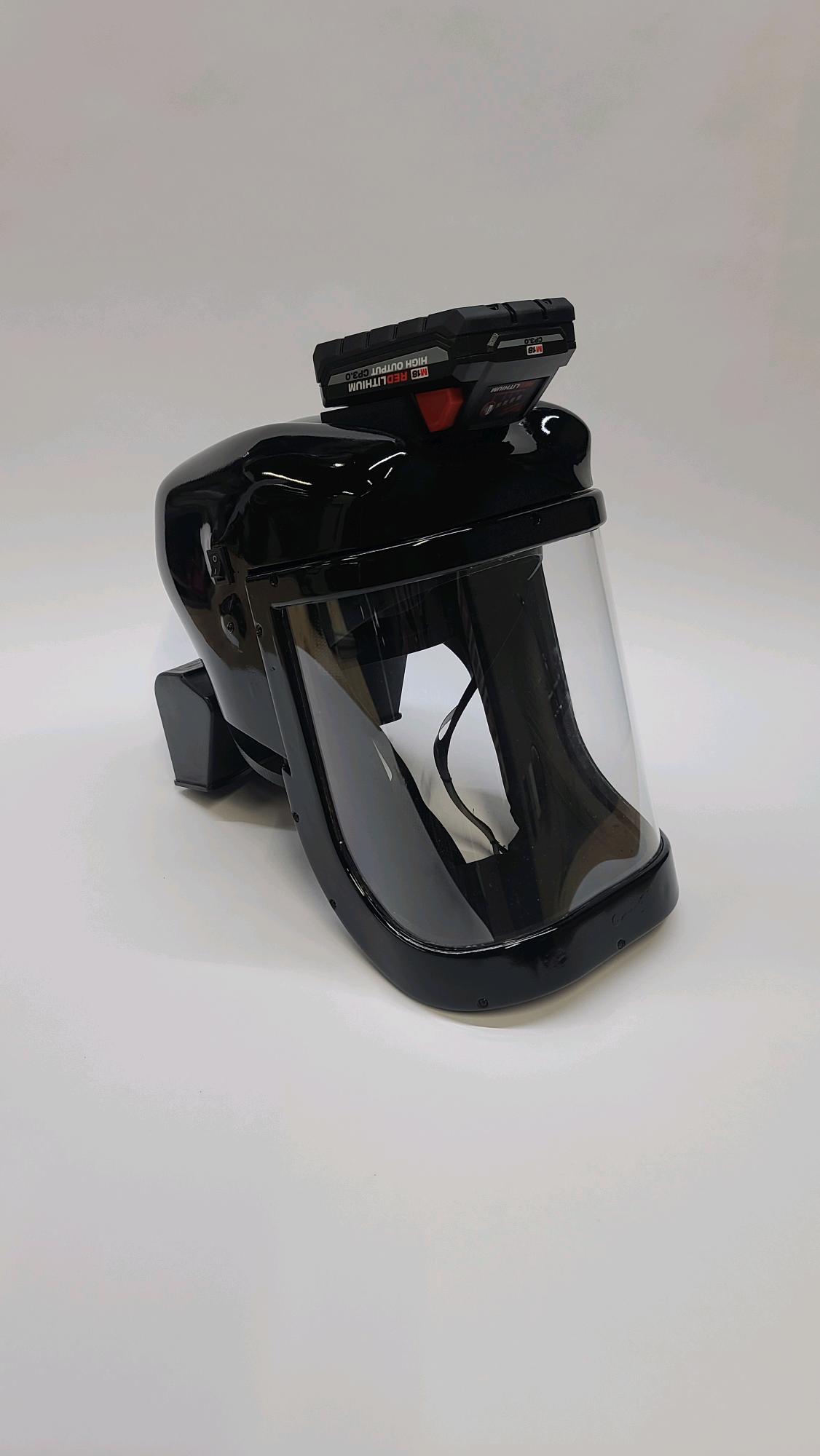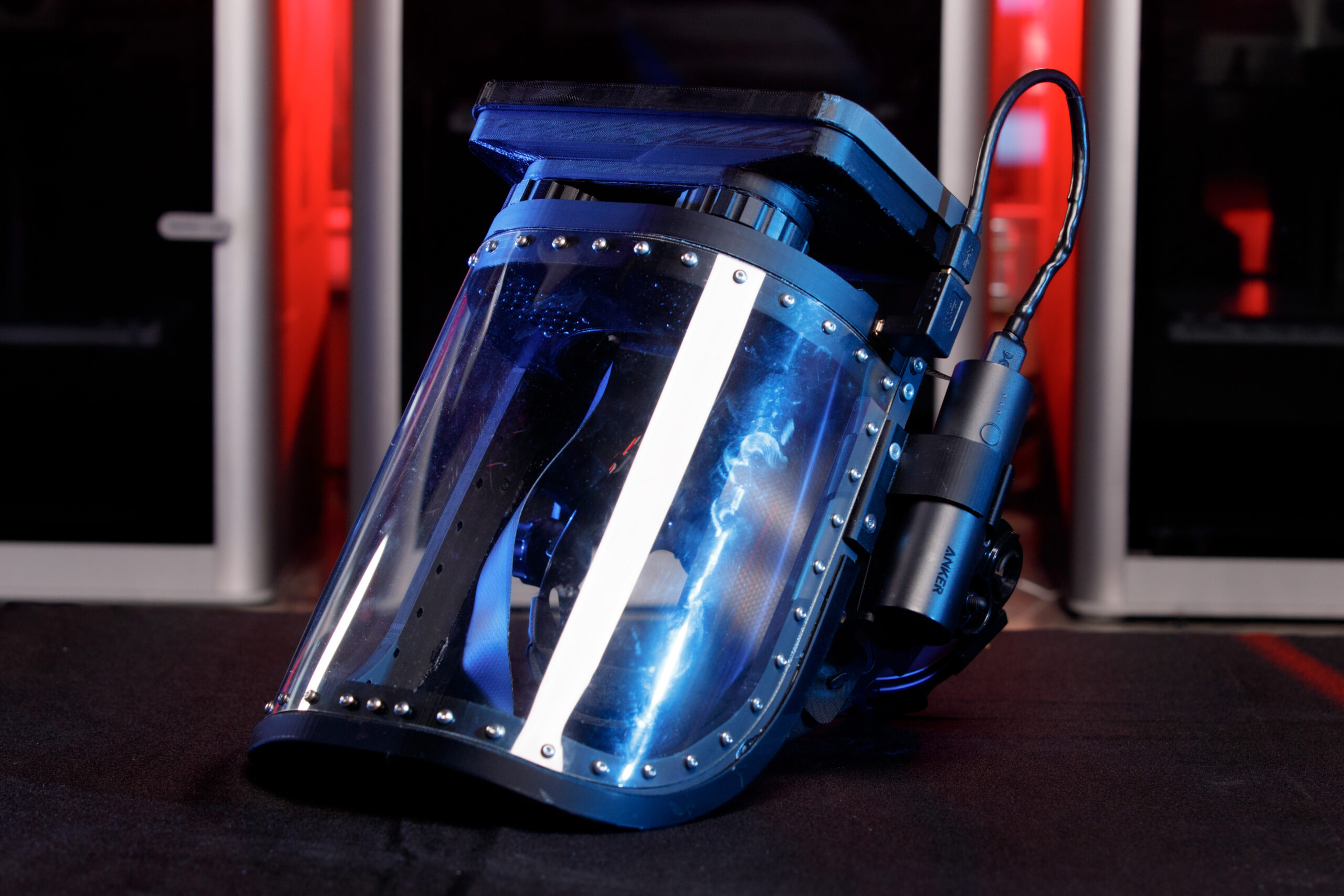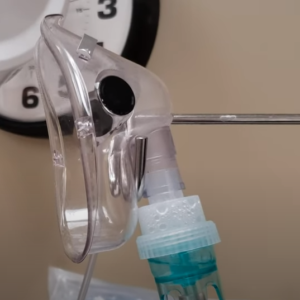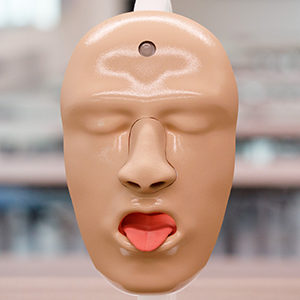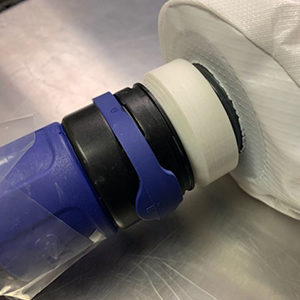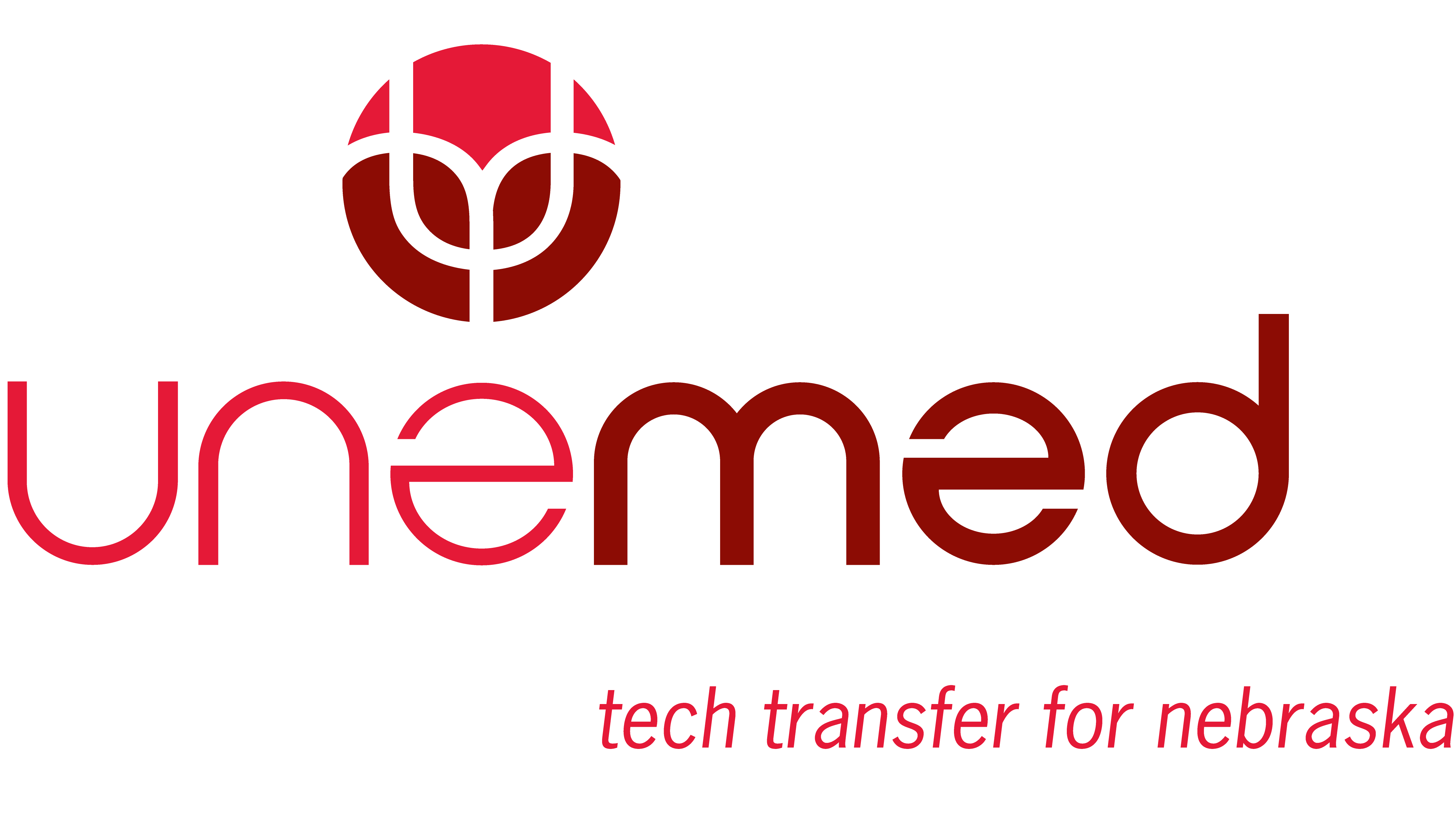Description
Healthcare PAPR helmet design improves comfort and communication
Powered air purifying respirators (PAPRs)—and related personal protective equipment—are manufactured with astronauts and miners in mind, not healthcare workers. Regardless, protective gear such as PAPRs have been adopted in healthcare to protect clinicians from highly infectious respiratory pathogens. The bulky and sometimes awkward devices might be great at protecting its wearer from the vacuum of space or meeting the intense physical demands of protecting a miner from coal dust. But a healthcare worker in a clinical setting has different needs.
A UNMC team led by Elizabeth Beam, PhD, RN, and Bethany Lowndes, PhD, MPH, contracted with UNO’s Brian Knarr, PhD, and Andrew Walski in the Machine and Prototyping Core to design and prototype a PAPR with the healthcare worker in mind. The result was a lightweight PAPR helmet that is all at once convenient to don and doff properly and easy to sanitize. With reduced fan noise and full-face visibility, the design goes far beyond improving user comfort and convenience to enhance performance and communication.
The significant impact on clinician comfort and communication, as well as interest from large companies and the military, made this invention UNeMed’s Most Promising New Invention of 2024.
The Healthcare PAPR Helmet Team has secured two grants to perform usability testing and create a ruggedized version for military use in austere environments.
To learn more about this technology, contact Tyler Scherr, PhD, at tyler.scherr@unmc.edu or 402-559-2468.



